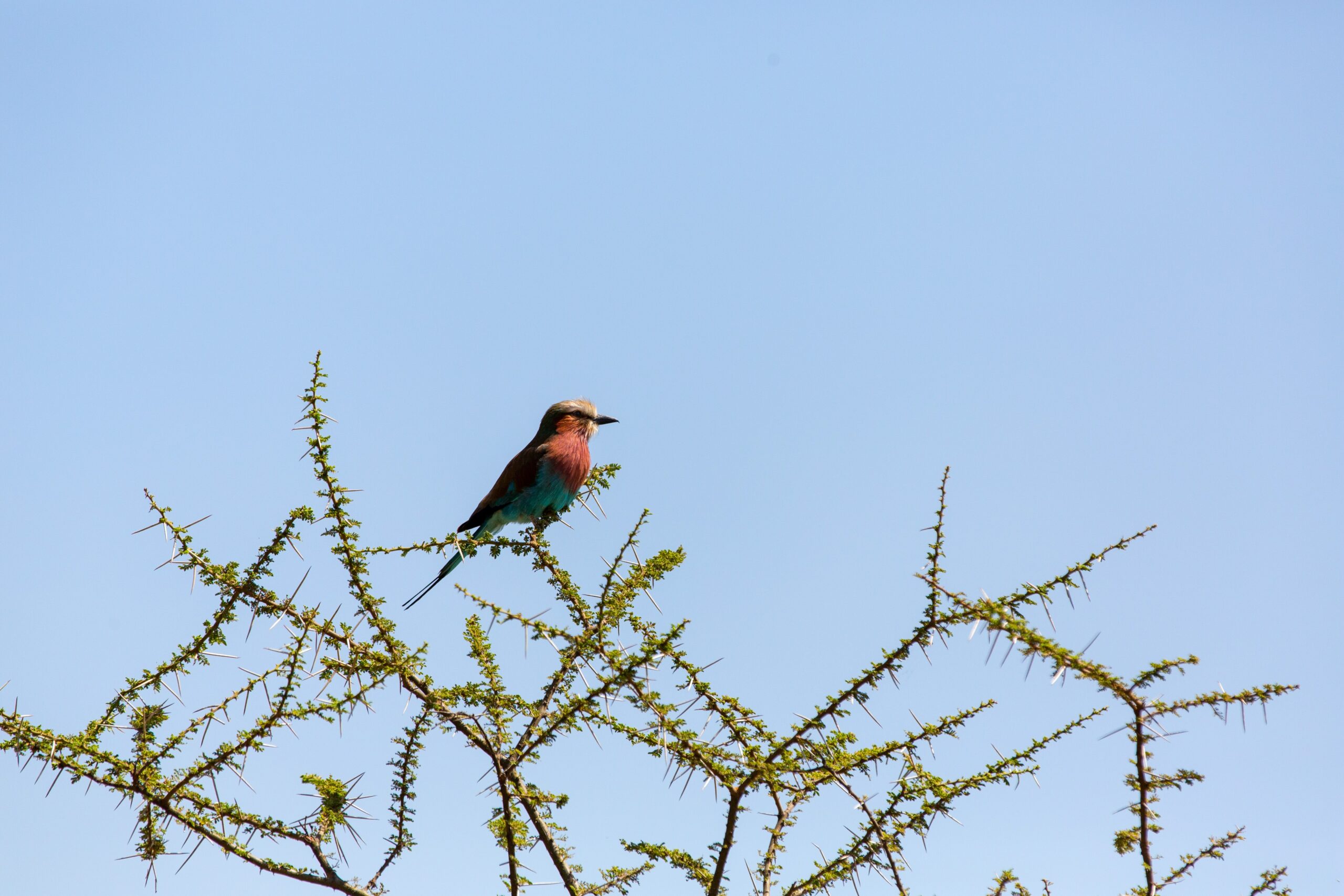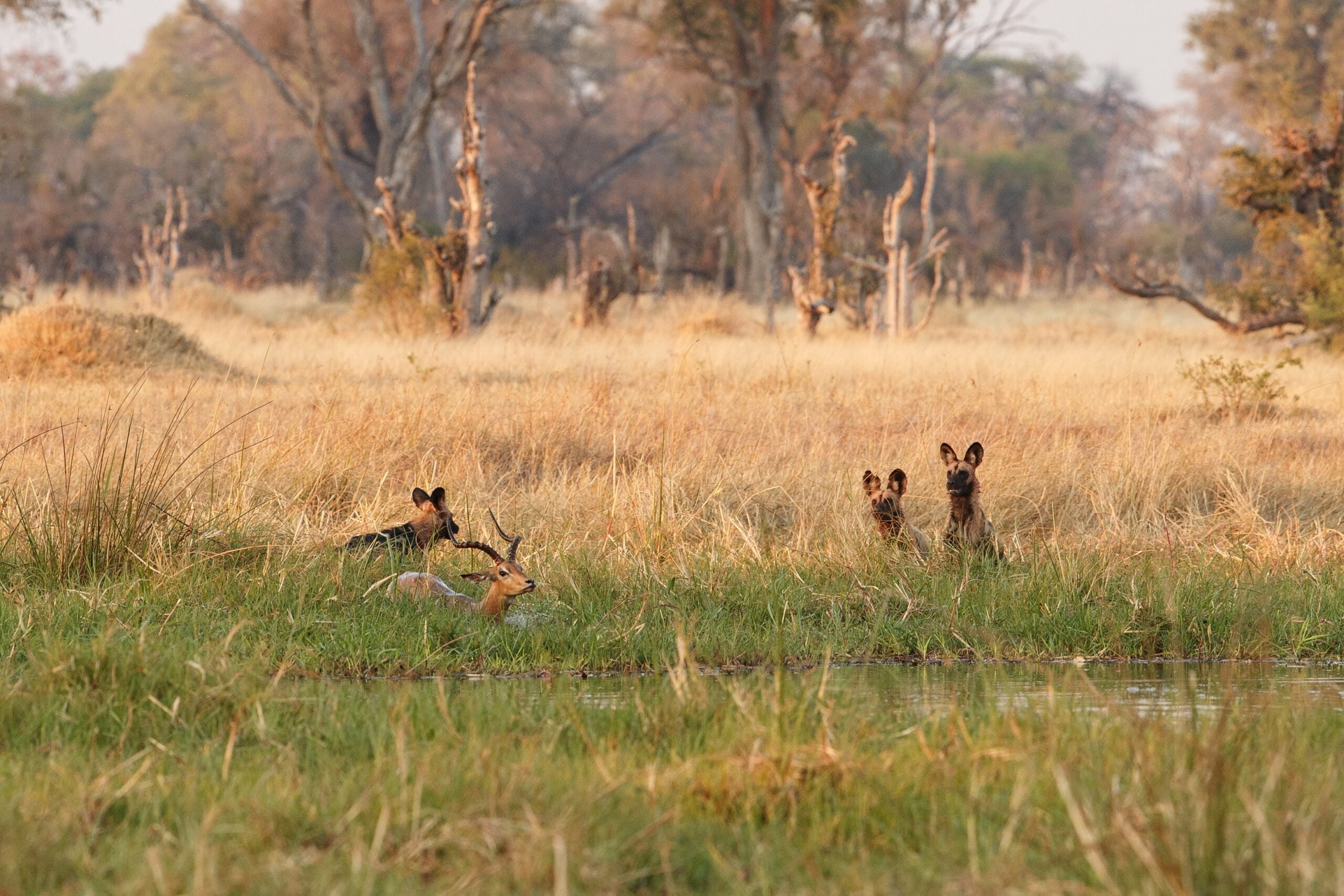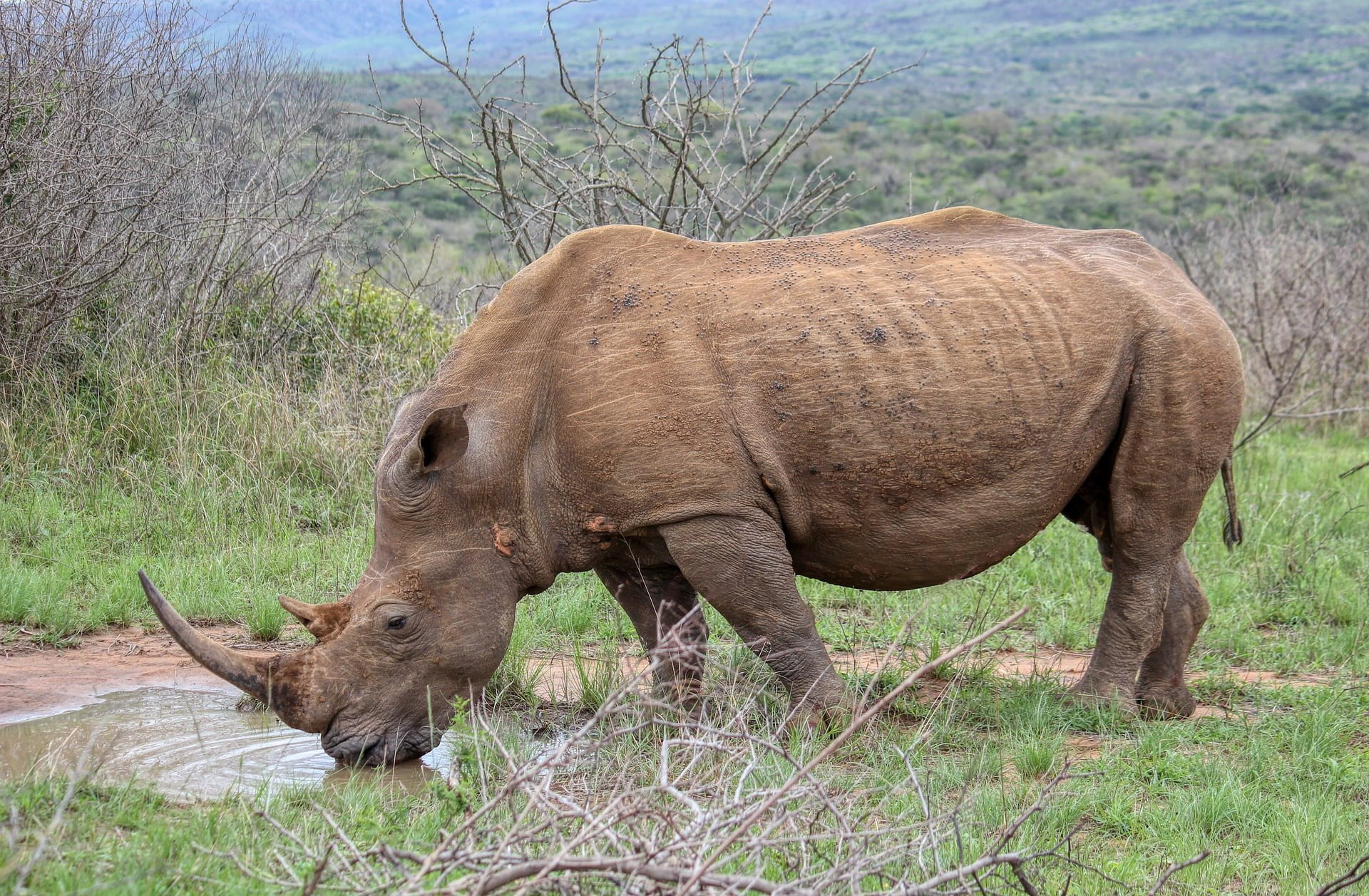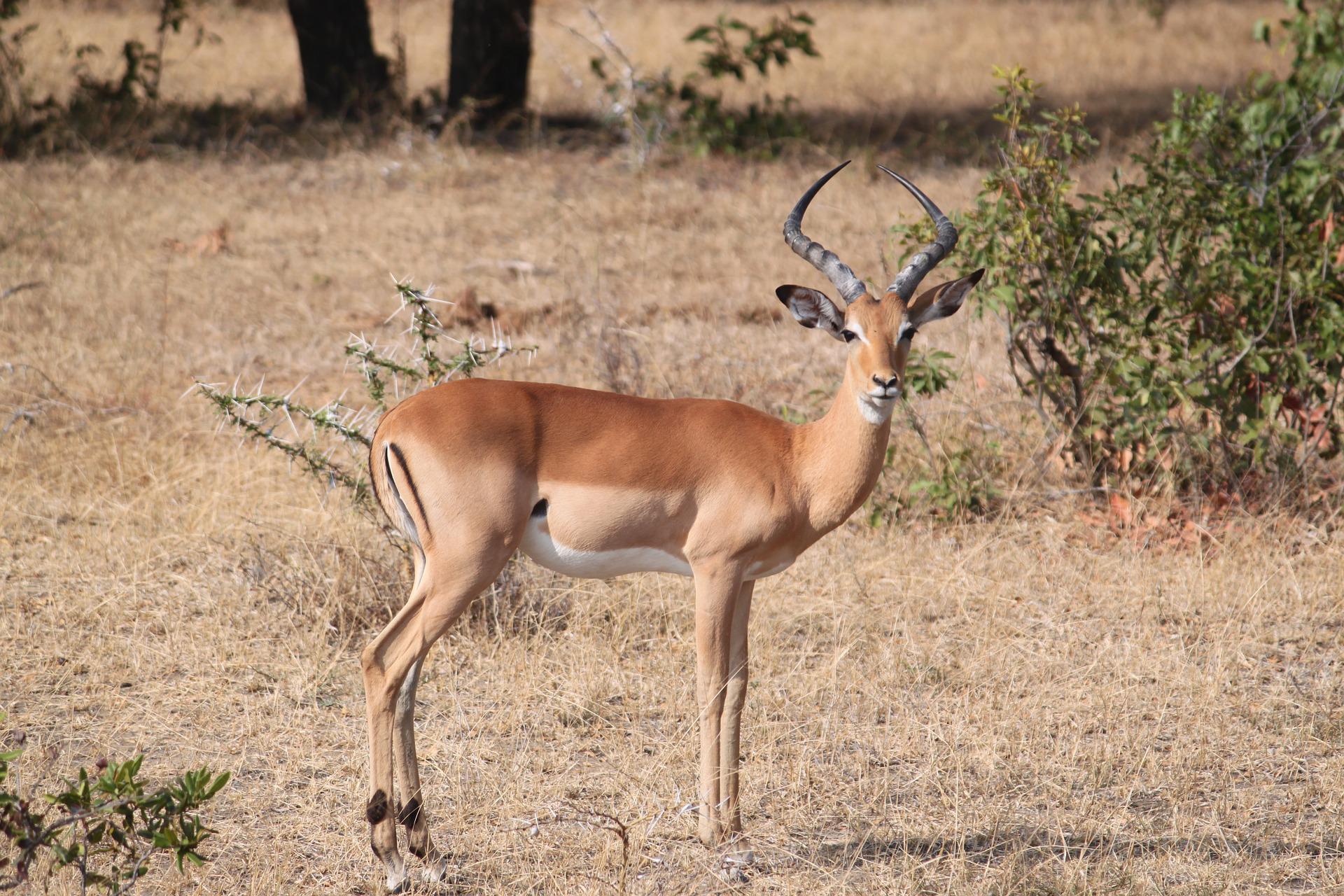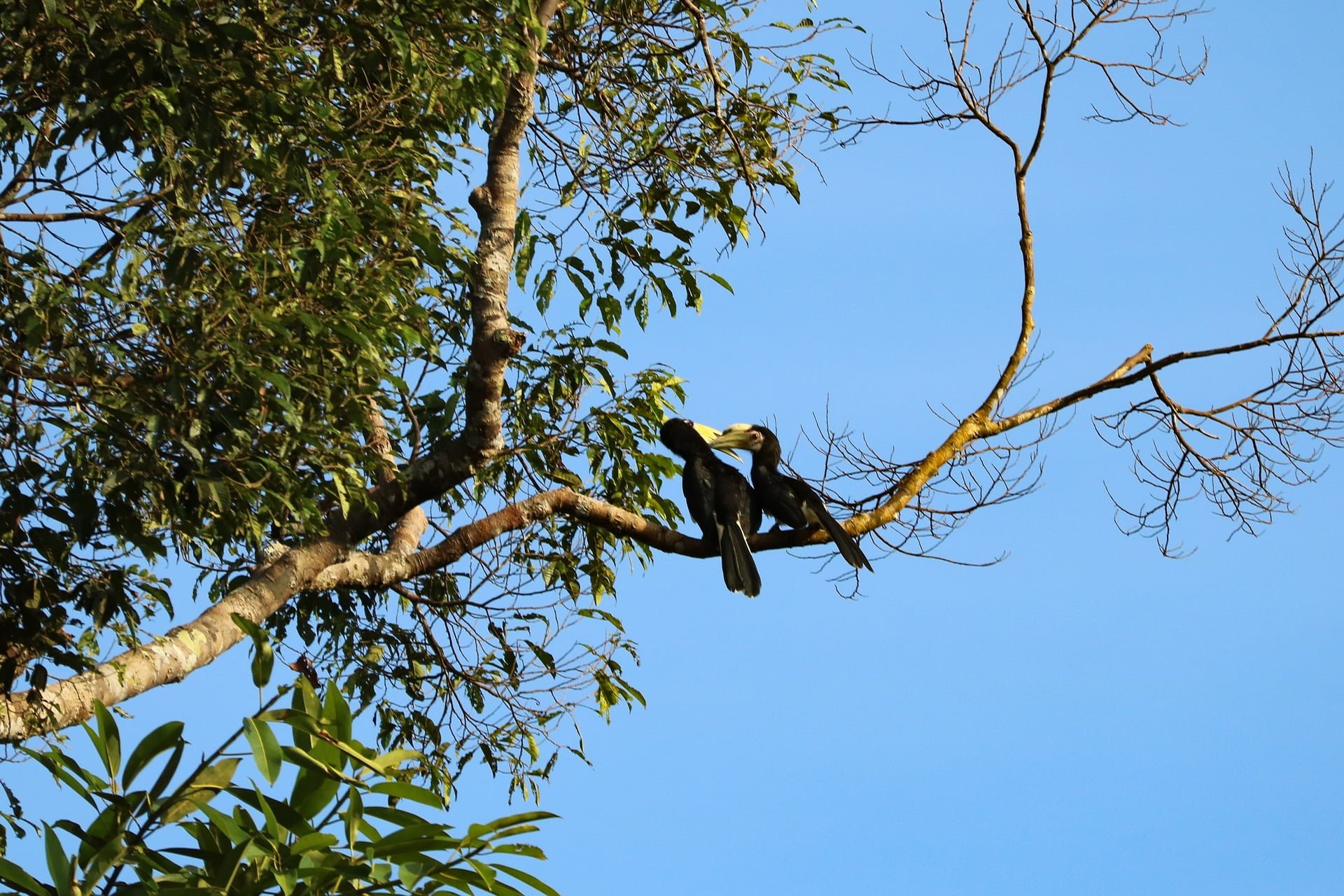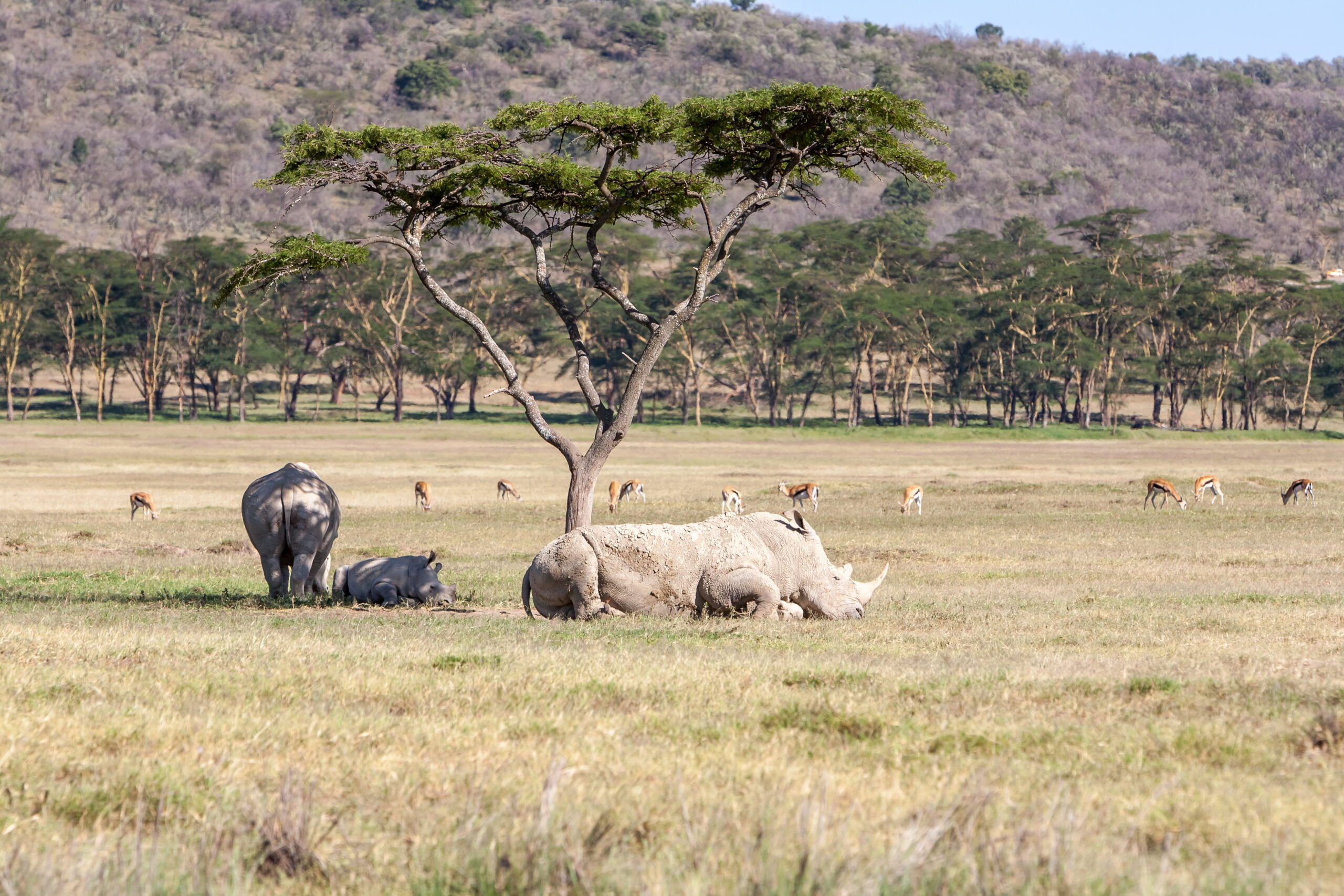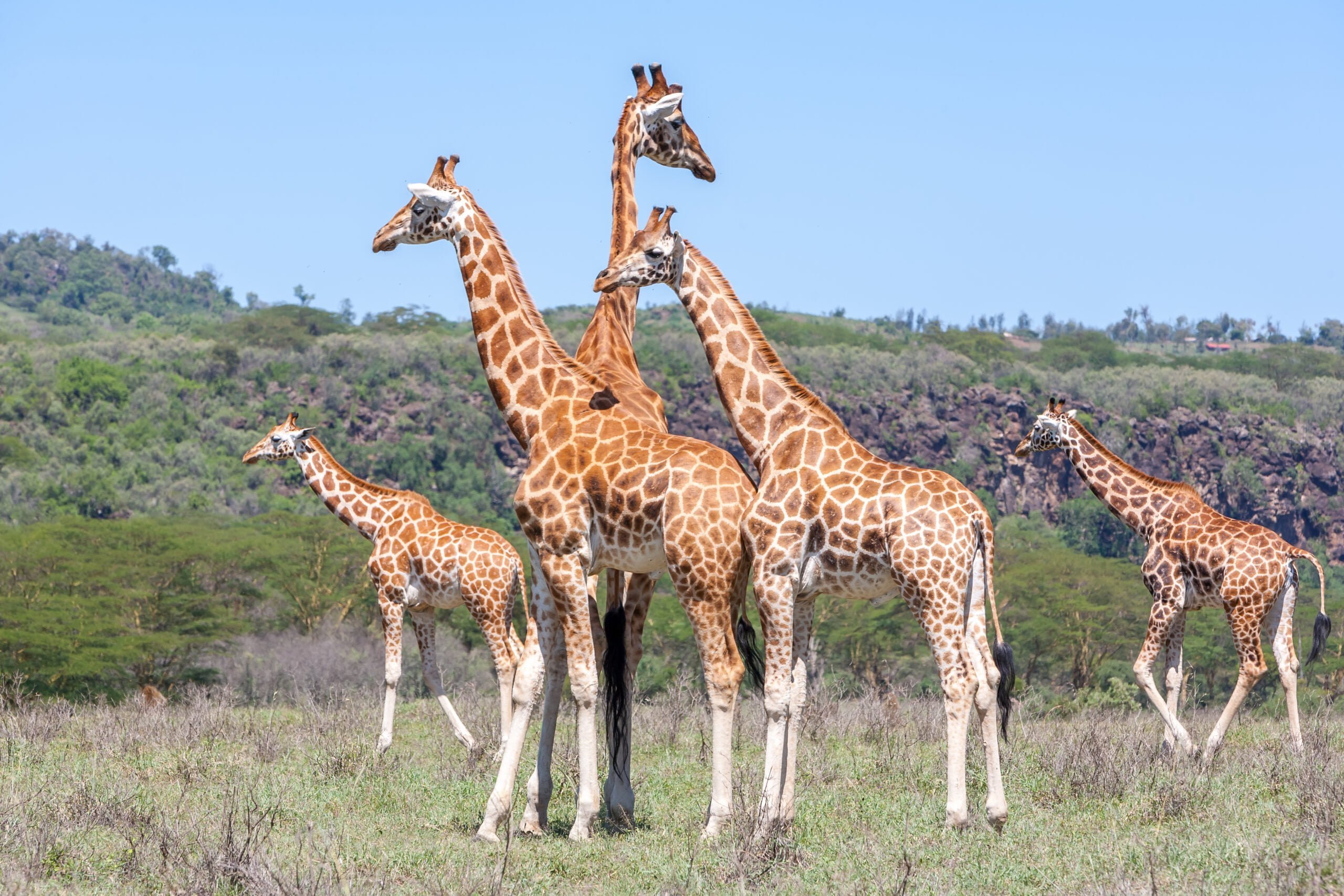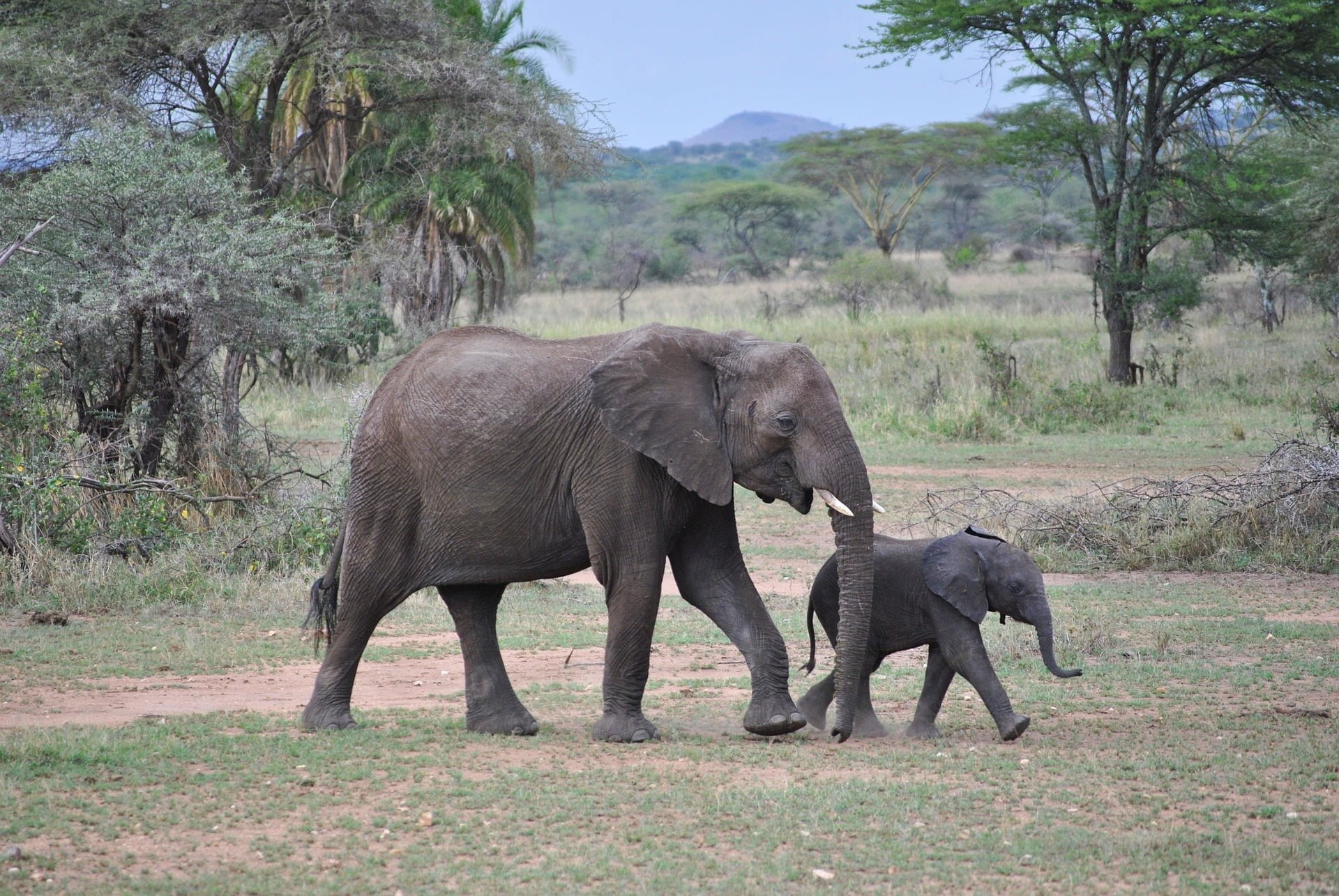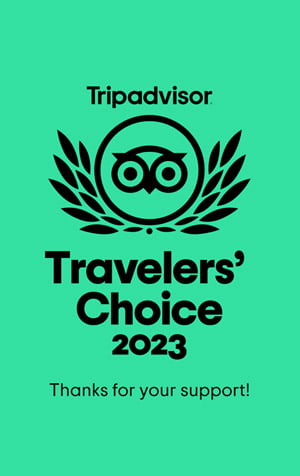Why go to Mkomazi National Park?
Mkomazi National Park was once a poaching ground, which is why it is now home to several endangered species such as the black rhino and the wild dog.
The park strives to reproduce the black rhinoceros, so that their offspring will live on in Tanzania, as they represent 30% of the country’s total population. During your safari, you will learn about their way of life and the measures that have been put in place in the park to protect them.
The black rhinos are in semi-captivity, while the wild dogs (also an endangered species) are in total captivity.
During your safari , you’ll be lucky enough to spot a number of different animals.
- Leopard
- Antelope
- Cheetah
- Buffalo
- Hornbills
- Lion
- Giraffe
- Zebra
- Oryx
- Elephant
- Impala
- Gazelle
- Martial eagles
In total, more than 400 species of birds are recorded in the park. Among them are some species from the arid regions of the north
It’s an ideal place for birdwatching: martial eagles, hornbills, weaverbirds, guinea fowl and many more.
With its immense surface area (3,500 km), the park will provide satisfaction for hikers. You can meet wild animals in dry landscapes, and take magnificent photos in a unique setting.

